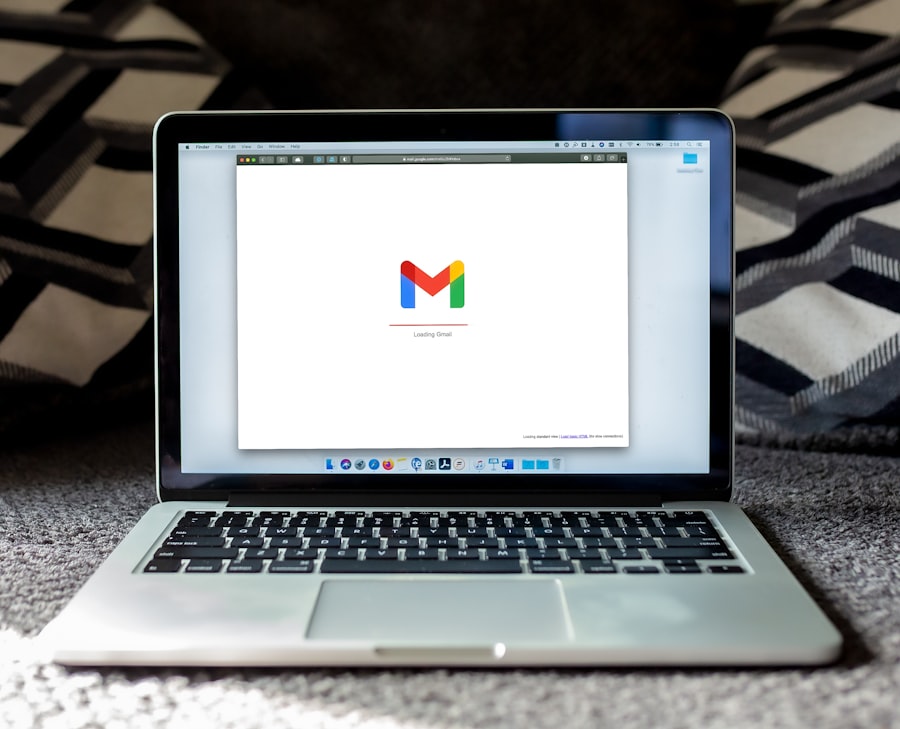Email deliverability refers to the ability of an email to successfully reach the recipient’s inbox. It is a crucial aspect of email marketing as it directly impacts the effectiveness of your campaigns. If your emails are not being delivered, they are essentially useless.
Email warming is a strategy used to improve email deliverability by gradually increasing the volume of emails sent from a new or dormant IP address. This process helps build a positive reputation with internet service providers (ISPs) and ensures that your emails have a higher chance of reaching the inbox instead of being marked as spam.
Key Takeaways
- Email deliverability is crucial for businesses to ensure their emails reach the intended recipients’ inboxes.
- Email warming is the process of gradually increasing email sending volume to establish a positive reputation with email providers.
- SMS-iT email warming can benefit businesses by improving email deliverability and increasing open and click-through rates.
- To prepare for email warming with SMS-iT, businesses should clean their email lists, segment their audience, and create engaging content.
- Best practices for email warming with SMS-iT include starting with a low sending volume, monitoring email metrics, and gradually increasing sending volume over time.
Why Email Deliverability Matters for Your Business
Poor email deliverability can have a significant negative impact on your business. If your emails are not reaching your subscribers, you are missing out on valuable opportunities to engage with them and drive conversions. This can result in decreased sales, lower customer retention rates, and ultimately, a decline in revenue.
On the other hand, good email deliverability can bring numerous benefits to your business. When your emails consistently reach the inbox, you have a higher chance of engaging with your audience and building trust. This can lead to increased open rates, click-through rates, and conversions. Additionally, good email deliverability helps maintain a positive sender reputation, which is crucial for long-term success in email marketing.
Understanding the Concept of Email Warming
Email warming is the process of gradually increasing the volume of emails sent from a new or dormant IP address. When you start sending emails from a new IP address, ISPs view it as an unknown sender and may be more likely to flag your emails as spam. By gradually increasing the volume of emails over time, you can establish a positive reputation with ISPs and improve your chances of reaching the inbox.
During the email warming process, it is important to closely monitor key metrics such as bounce rates, spam complaints, and engagement rates. This allows you to identify any issues and make adjustments to your email sending practices. By following best practices and gradually increasing your email volume, you can improve your sender reputation and increase the likelihood of your emails being delivered.
Benefits of Using SMS-iT Email Warming for Your Business
| Benefits of Using SMS-iT Email Warming for Your Business |
|---|
| Improved email deliverability |
| Increased email open rates |
| Higher email click-through rates |
| Reduced risk of emails being marked as spam |
| Enhanced sender reputation |
| Improved email engagement |
| Increased customer trust and loyalty |
| Higher ROI on email marketing campaigns |
SMS-iT is a leading provider of email warming services that can help your business improve email deliverability. By using SMS-iT’s email warming service, you can benefit from their expertise and experience in the field. They have a deep understanding of the factors that impact email deliverability and can guide you through the process of improving your sender reputation.
One of the key benefits of using SMS-iT email warming is that it helps you establish a positive reputation with ISPs. By gradually increasing your email volume and closely monitoring key metrics, you can build trust with ISPs and improve your chances of reaching the inbox. This can result in higher open rates, click-through rates, and conversions for your email campaigns.
Another benefit of using SMS-iT email warming is that it saves you time and effort. Email warming can be a complex process that requires careful planning and monitoring. By outsourcing this task to SMS-iT, you can focus on other aspects of your business while they take care of improving your email deliverability.
How to Prepare for Email Warming with SMS-iT
Before starting an email warming campaign with SMS-iT, there are several steps you should take to prepare. First, it is important to ensure that your email list is clean and up-to-date. Remove any inactive or invalid email addresses to improve deliverability and avoid high bounce rates.
Next, segment your email list based on engagement levels. This allows you to tailor your email warming campaign to different segments of your audience. For example, you may want to send more frequent emails to highly engaged subscribers while gradually increasing the volume for less engaged subscribers.
It is also important to review your email content and ensure that it complies with best practices and spam regulations. Avoid using spam trigger words, excessive capitalization, and misleading subject lines. By following these best practices, you can improve the chances of your emails reaching the inbox.
Setting Up Your SMS-iT Email Warming Campaign

Setting up an email warming campaign with SMS-iT is a straightforward process. First, you will need to provide them with your email list and any specific instructions or preferences you have for the campaign. They will then analyze your list and develop a customized warming plan based on your goals and requirements.
Once the plan is finalized, SMS-iT will gradually increase the volume of emails sent from your IP address over a specified period of time. They will closely monitor key metrics such as bounce rates, spam complaints, and engagement rates to ensure that your sender reputation is improving.
Throughout the campaign, SMS-iT will provide regular reports and updates on the progress of your email warming. This allows you to stay informed and make any necessary adjustments to your email sending practices.
Best Practices for Email Warming with SMS-iT
When conducting an email warming campaign with SMS-iT, it is important to follow best practices to maximize the effectiveness of the campaign. First, start with a small volume of emails and gradually increase it over time. This helps establish a positive reputation with ISPs and reduces the risk of being flagged as spam.
Second, closely monitor key metrics such as bounce rates, spam complaints, and engagement rates. This allows you to identify any issues and make adjustments to your email sending practices. For example, if you notice a high bounce rate, it may indicate that your email list needs further cleaning.
Third, ensure that your email content is engaging and relevant to your audience. Personalize your emails whenever possible and provide valuable content that encourages recipients to open and engage with your emails. This can help improve engagement rates and increase the chances of your emails reaching the inbox.
Measuring the Success of Your SMS-iT Email Warming Campaign
Measuring the success of your email warming campaign with SMS-iT is crucial to understanding its impact on your email deliverability. There are several metrics you should track and analyze to assess the effectiveness of the campaign.
First, monitor your deliverability rate, which measures the percentage of emails that successfully reach the recipient’s inbox. A higher deliverability rate indicates that your email warming efforts are paying off and that your emails are being delivered.
Second, track your open rates and click-through rates. These metrics indicate how engaged your audience is with your emails. If you see an increase in open rates and click-through rates, it is a positive sign that your email warming campaign is improving engagement and deliverability.
Finally, keep an eye on bounce rates and spam complaints. A decrease in bounce rates and spam complaints indicates that your sender reputation is improving and that ISPs are viewing your emails as legitimate.
Troubleshooting Common Issues with Email Deliverability
Despite following best practices and using SMS-iT email warming, you may still encounter common issues that can affect email deliverability. Some of these issues include high bounce rates, low engagement rates, and being marked as spam.
To troubleshoot high bounce rates, review your email list and remove any invalid or inactive email addresses. Additionally, ensure that you are using a reputable email service provider (ESP) that has a good relationship with ISPs.
Low engagement rates can be addressed by improving the quality and relevance of your email content. Personalize your emails whenever possible and provide valuable content that encourages recipients to open and engage with your emails.
If your emails are being marked as spam, review your email content for any spam trigger words or misleading subject lines. Additionally, ensure that you have obtained proper consent from your subscribers and that you are complying with spam regulations.
Boost Your Email Deliverability with SMS-iT Email Warming
In conclusion, email deliverability is a crucial aspect of email marketing that directly impacts the success of your campaigns. Poor email deliverability can result in missed opportunities and decreased revenue, while good email deliverability can lead to increased engagement and conversions.
Email warming is a strategy that can help improve email deliverability by gradually increasing the volume of emails sent from a new or dormant IP address. By using SMS-iT email warming, you can benefit from their expertise and experience in the field and improve your chances of reaching the inbox.
To prepare for email warming with SMS-iT, ensure that your email list is clean and up-to-date, segment your audience based on engagement levels, and review your email content for compliance with best practices and spam regulations.
Setting up an email warming campaign with SMS-iT is a straightforward process that involves providing them with your email list and any specific instructions or preferences you have. Throughout the campaign, closely monitor key metrics and follow best practices to maximize the effectiveness of the campaign.
Measuring the success of your email warming campaign is crucial to understanding its impact on your email deliverability. Track metrics such as deliverability rate, open rates, click-through rates, bounce rates, and spam complaints to assess the effectiveness of the campaign.
Despite following best practices and using SMS-iT email warming, you may still encounter common issues with email deliverability. Troubleshoot these issues by reviewing your email list, improving the quality and relevance of your email content, and ensuring compliance with spam regulations.
In conclusion, SMS-iT email warming can help your business improve email deliverability and achieve better results from your email marketing campaigns. By gradually increasing your email volume and closely monitoring key metrics, you can establish a positive reputation with ISPs and increase the chances of your emails reaching the inbox.
If you’re interested in learning more about how SMS-iT can enhance your customer relationships and streamline your appointment scheduling process, you might find our article on “Maximizing Customer Relationships with SMS-iT: A Comprehensive Guide to Effective CRM” to be a valuable resource. This article dives deep into the benefits of using SMS-iT for customer relationship management and provides practical tips for optimizing your CRM strategy. Check it out here!







